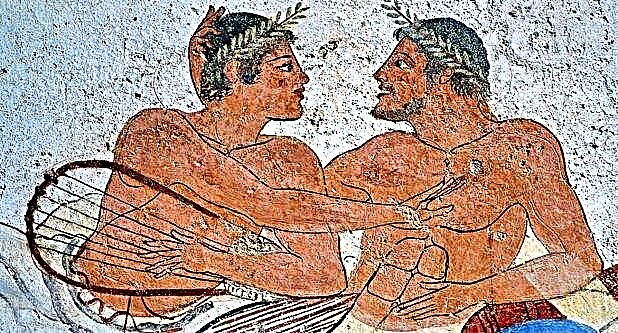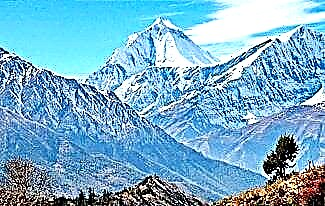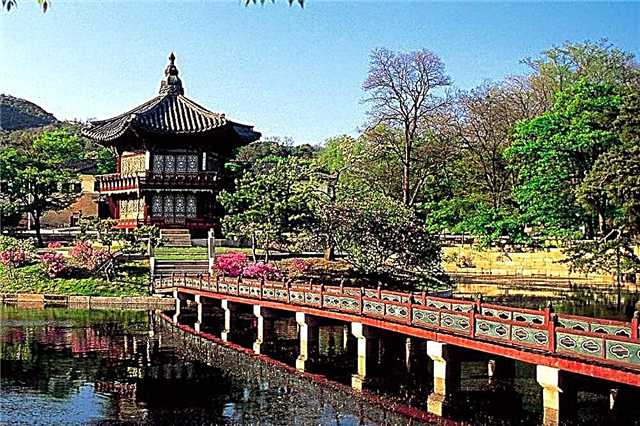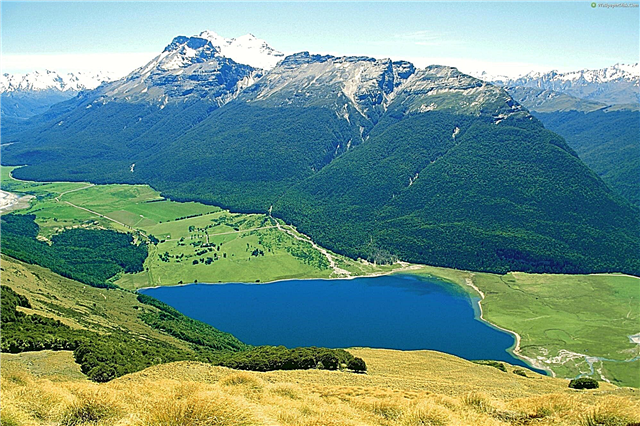The relationship between nature and man has always been ambiguous. Gradually, humanity has gone from surviving in direct opposition to the forces of nature to a broad, close to global impact on the environment. Reservoirs appeared on the Earth's surface, outstripping other seas in area and volume of water. On millions of hectares, plants are grown that would never have appeared without human participation. Moreover, they can grow where there was no blade of grass before the appearance of a person - artificial irrigation helps.

The ancient Greeks complained about too strong influence of man on nature. However, environmental propaganda began to acquire its current hysterical tone only in the second half of the 20th century. Of course, sometimes human greed damages the environment, but usually this impact on nature is stopped at the shortest time periods from the point of view of history, not to mention the existence of the Earth. The same London, according to the predictions of even quite healthy people, should have perished from overpopulation, hunger, horse dung and smog - and it costs nothing. As the hero of one of Michael Crichton's novels said, humanity thinks too much about itself, and the Earth existed before man, and will exist after.
Nevertheless, the general message that the attitude towards environmental protection received in the 20th century is correct. Humanity, for its own safety, must treat nature rationally and carefully. Do not go back to the caves, but also do not cut the last hectares of rainforest for palm oil. However, nature, as history shows, is unlikely to allow the latter.
1. Veneration of the "wilderness" in its American version has nothing to do with real wilderness. Having dealt with the Indians, the Americans later formalized the displacement of the indigenous people from the places where they lived for millennia, with the desire to preserve the "wildlife": forests, prairies, the same notorious herds of bison, etc. In fact, American natural landscapes as they were before the arrival of guests from civilized countries to the continent was formed with the participation of the Indians. Some of them were engaged in slash-and-burn agriculture, some were hunting and gathering, but one way or another they influenced the environment, at least by collecting firewood.

2. Homosexuality in ancient Greece, the spread of a huge number of monasteries in Tibet and the custom of the transfer of the wife from the deceased husband to the next of kin are of the same nature. The population of people in regions with a rather scarce nature is always limited, therefore, along with wars and epidemics, such exotic methods of reducing the birth rate appear.

3. The attention of the state and the ruling circles to the preservation of natural resources often has nothing to do with their actual preservation. The restrictions imposed on human activities in forests, which were actively adopted throughout Europe, starting from the 15th century, sometimes even forbade peasants to collect dead wood. On the other hand, during the Industrial Revolution, landlords cleared out forests of tens of thousands of hectares. German half-timbered houses - the construction of houses from vertical beams and all kinds of rubbish in half with clay, filling the space between the beams - this is not a triumph of architectural genius. This is evidence that by the time such houses were built, the forests already belonged to whoever they should have, and not to the communities of peasants, and even more so to the urban commoners. The same applies to large irrigation projects in the Ancient East, and the English Fencing, and many other "environmental" reforms.

Fachwerk was not invented from a good life
4. Against the background of a decrease in productivity in Europe in the 17th-18th centuries, even authoritative scientists put forward exotic theories of increasing soil fertility. For example, the German chemist Eustace von Liebig, who made a lot of discoveries, believed that theoretically fertility would be restored if all the excrement of humanity for a thousand-year history returned to the soil. The centralized sewage system, he believed, would finally destroy the soil. As an example, the scientist put China, in which the guest showed a bad taste if he did not leave the processed part of the consumed treat to the owner. There is some truth in von Liebig's statements, however, a decrease in yield is generated by a whole complex of reasons, including, in addition to a lack of fertilizers, erosion and a number of other factors.

Eustace von Liebig knew a lot about not only chemistry
5. Criticism of human behavior in relation to nature is not at all an invention of the twentieth century. Seneca also angrily criticized wealthy compatriots who spoiled the landscapes of rivers and lakes with their villas. In ancient China, there were also philosophers who scolded people who believed that pheasants exist in order to tear out beautiful feathers from them, and cinnamon does not grow in order to diversify human food. True, in antiquity, the dominant belief was that nature would withstand man's violence against itself.

Seneca criticized the development of the banks of reservoirs
6. Throughout most of human history, forest fires have not been evil. Our ancestors used fire in forests for a variety of purposes. They knew how to create fires of different types. To obtain fields, trees were felled or stripped of bark before setting fire. In order to clear the forest of shrubs and excess young growth, ground fires were organized (huge trees in the Mammoth Valley in the USA grew like this precisely because the Indians regularly eliminated their competitors with fire. Fires not only freed the land for sowing, but also fertilized it (ash is healthier than cow manure), and destroyed all parasites.The current catastrophic scale of forest fires is explained precisely by the fact that forests have become protected, untouchable.

7. The assertion that ancient people hunted much more carefully than modern hunters, who kill not for food, but for pleasure, is not 100% true. Thousands of animals were killed in mass slaughter. There are known places where the remains of thousands of mammoths or tens of thousands of wild horses have been preserved. The hunter instinct is not a modern invention. According to research, modern wild tribes have hunting norms, but they turn a blind eye to their implementation. In one of the South American tribes, unborn calves and other cubs are considered a delicacy. The Indians enjoy them with pleasure, although here the case of “wrong” hunting is more than obvious. In North America, the Indians, with such trepidation described in the literature as guardians of nature, killed hundreds of buffalo, cutting out only their tongues. The rest of the carcasses were thrown at the hunting ground, because they were paid money only for languages.

8. In Japan and China in the past, forests were treated very differently. If in huge China, despite the formidable rescripts of the central government, forests were mercilessly cut down, even in the mountains of Tibet, then in Japan, despite the scarcity of resources, they managed to preserve the tradition of wooden construction and preserve forests. As a result, in the middle of the twentieth century, forests in China occupied 8% of the territory, and in Japan - 68%. At the same time, in Japan, houses were also massively heated with charcoal.
9. A holistic environmental policy was first introduced centrally in Venice. True, after several centuries of trial and error, when the area around the city was either excessively drained or swamped. From their own experience, the Venetians realized that the presence of forests saves from floods, therefore, already at the beginning of the 16th century, it was forbidden to cut down the surrounding forests. This ban was important - the city needed huge quantities of firewood and construction timber. More than a million piles were needed for the construction of the Cathedral of Santa Maria della Salute alone. There, in Venice, they realized the need to isolate infectious patients. And the very word “isolation” means “resettlement to an island”, and there were enough islands in Venice.

A million piles
10. The Dutch system of canals and dams is justly admired in the world. Indeed, the Dutch have spent vast resources fighting the sea for centuries. However, it should be remembered that the Dutch literally dug up most of the problems with their own hands. The point is peat, which in the Middle Ages was the most valuable fuel in this area. Peat was mined in a very predatory way, without thinking about the consequences. The ground level dropped, the area was swampy. To drain it, it was necessary to deepen the channels, increase the height of the dams, etc.
11. Up until the middle of the twentieth century, agriculture on fertile soils was inextricably linked with malaria - mosquitoes love swampy fertile soils and stagnant water. Accordingly, irrigation has often led to the fact that, until recently, safe areas became breeding grounds for malaria. At the same time, the same irrigation techniques in different regions of the world led to different results. The Dutch, who were proud of their shipping canals, used the same canal scheme in Kalimantan to create a malaria breeding ground for the island. Supporters and opponents of irrigation were reconciled by the emergence of DDT. With the help of this undeservedly damned chemical, malaria, which has taken human lives for thousands of years, was defeated in just a couple of decades.
12. Modern Mediterranean landscapes, with their sparse vegetation on the slopes of hills and mountains, did not appear at all because the ancient Greeks and Romans cut down forests for economic needs. And even more so not because of the goats, allegedly eating all the young shoots and leaves on the lower branches. Man, of course, to the best of his ability, helped the forests disappear, but the main factor was the climate: after the end of the Little Ice Age, the vegetation began to adapt to warming and acquired its present forms. At least in the mass of ancient Greek sources that have come down to us, the forest deficit is not mentioned. That is, at the time of Plato and Socrates, the state of vegetation in the Mediterranean was hardly different from the present one - the business timber was brought in as well as brought in, not seeing anything unusual in it.

Greek landscape
13. Already in the middle of the 17th century, the writer John Evelyn, one of the founders of the Royal Academy, cursed the inhabitants of London, using coal. Evelyn called the smog emanating from the burning of coal “hellish”. As an alternative, one of the first environmentalists suggested using good old charcoal.

London smog: a mixture of fog and smoke
14. People have known about the convenience of water closets for a long time. In 1184, a crowd that had gathered in the palace of the Bishop of Erfurt to greet the king who had arrived, fell through the floor and collapsed into a stream flowing under the palace. The palace was built over the stream solely so that the water would immediately wash away the impurities. The latter, of course, were collected in a special tank.
15. In the 1930s, the prairies of the United States and Canada were in the "Dust Cauldron". A sharp increase in the cultivated area, the lack of measures against erosion, burning of stubble led to a change in the structure of the soil. In open areas, even relatively weak winds have blown away the topsoil over thousands of square kilometers. The top layer of humus was destroyed on 40 million hectares. Erosion affected 80% of the Great Plains. Thousands of kilometers from the boiler, brown or reddish snow fell, and people in the disaster area began to get sick with dusty pneumonia. Within a few years, 500,000 people moved to the cities.

A dusty cauldron destroyed hundreds of settlements









